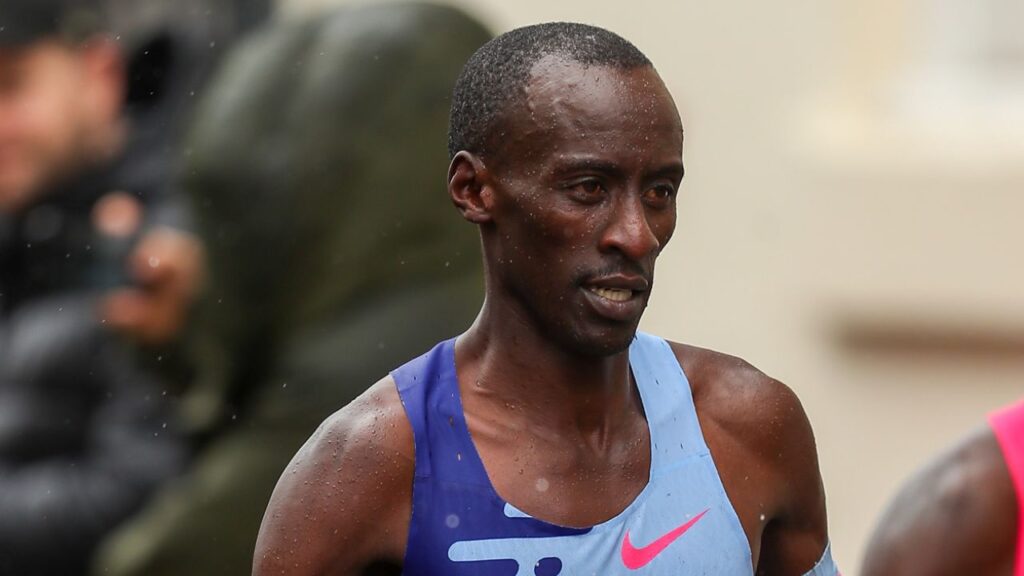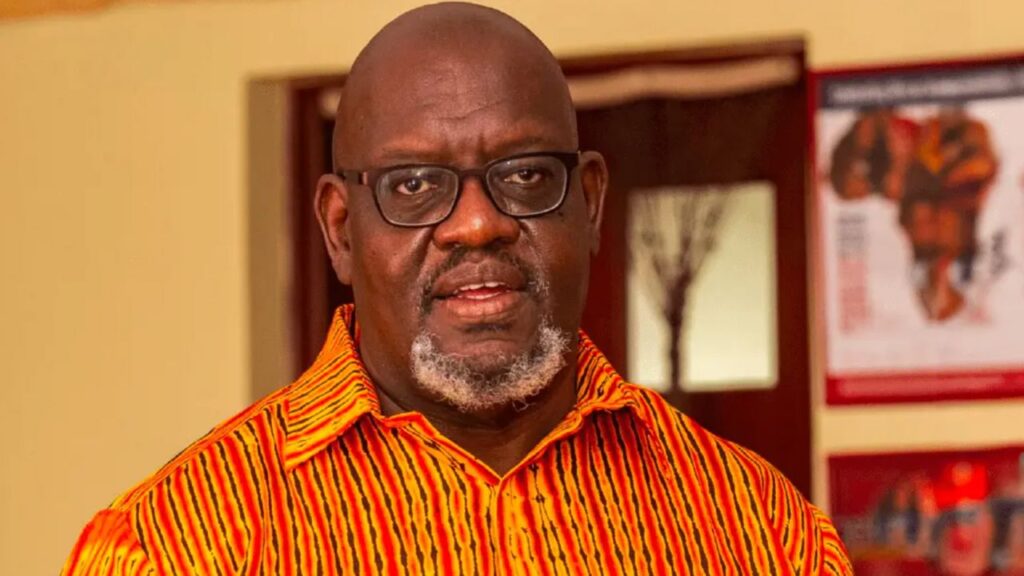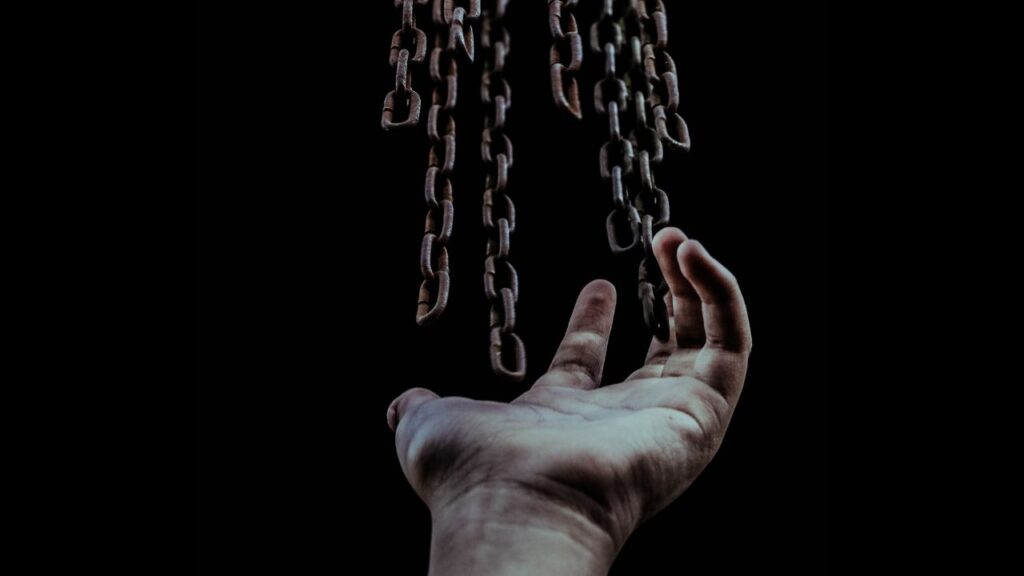I left Nairobi towards the end of March, headed for my home in the Kano Plains located in the lowlands that form part of the floodplains of River Nyando in Kisumu County. It was a few days before the curfew and cessation of movements into and out of Nairobi declared by President Uhuru Kenyatta to contain the spread of COVID-19.
I had grown increasingly anxious, worried by the mood of uncertainty in Nairobi caused by the news cycle about COVID-19. Staying in the village and having a family support system would provide the desired peace of mind. When I arrived in Kano, I found my home area under water due to floods which, according to the locals, were worse than the COVID-19 pandemic despite the scant media attention they were receiving.
On the 8th of April, a video of a blind man submerged in water and pleading with the government to come to his rescue went viral. After reposting it on my social media channels, I decided to locate the mzee’s home in Ombaka, Ahero Ward, Nyando constituency to establish the facts on the ground and find solutions to alleviate his suffering. When I arrived at Ombaka, the murram road to his home was impassable due to flooding. I left the vehicle on dry ground and changed into gumboots to walk the rest of the way to the home.
I was among the many visitors who trooped to his home to deliver items including foodstuffs ever since the video had gone viral. I met a lady who claimed she had been sent by nominated Member of Parliament David Sankok to deliver donations. Also among the well-wishers was a local patron who was using his social media clout to rally his followers to build a house for the mzee.
“Are we going to fundraise and build homes for the entire community?”, a friend asked as we passed through a series of abandoned semi-permanent houses that were falling apart and submerged in water.
After walking on dykes, swampy areas, deep trenches and past abandoned homes, we arrived at the home of 58-year-old Ong’udi Onam. The house was an island surrounded by water, a two-roomed semi-permanent house smelling of damp, the mud walls falling apart and the floor muddy from the flooding waters. We handed over the shopping we had taken to the family and, after prayers, went outside the house to speak with the mzee.
“Why do you still live in such a dangerous place yet all the villagers have moved?”, I asked him. “Can you imagine the challenges a blind man can face in an IDP [Internally Displaced People] Camp during COVID-19 times?”, he countered. “Tell the government that death is death whether by floods or COVID-19. There’s a bigger coronavirus in Nyando in the form of floods and it’s killing our people”, he lamented.
As I left Onam’s home, I was overcome by emotions that soon morphed into resentment and anger. “How cruel can this life be?”, I wondered. A poor, unemployed, visually impaired man lives in a home that floods every year destroying crops, exposing him to waterborne diseases. At night, hippos from the lake threaten his life as they graze in his compound while inside his house, he battles malaria-causing mosquitoes and the anxiety that the house may collapse on him.
Although the video about Onam’s plight pricked the conscience of the nation and Kenyans in the diaspora, it was the symptom of a bigger problem. Even though the Nyando River Basin has always experienced flooding because of its topography and proximity to Lake Victoria, the 2020 floods are said to be the worst in living memory. Since November 2019, the Nyando River Basin has experienced excessive flooding leading to the displacement of thousands to internally displaced persons’ camps.
By the 8th of April, about 1,500 people had been displaced in a region that had experienced consistent heavy rains from November 2019. In Ombaka, I visited a local church hosting displaced women where I met a 78-year-old lady who had been enduring cold nights, insecurity, mosquitoes and a poor diet from food donations since February when she became displaced. The crops she had planted were washed away and her house had slowly succumbed to the floods.
Following the suffering I witnessed in the IDP camps and the destruction caused by the floods on the first day, I went to other parts of Nyando to document the impact of the flooding and raise awareness. In the process, I visited Ogenya in Kadibo, Kadhiambo in Kawino South, Kabonyo Kanyagwal, Ayweyo and Ombaka Kakola sub-locations.
Everywhere I went was untold suffering; lives disrupted, property and crops destroyed, and general hopelessness. Certain parts of Nduru in Kabonyo Kanyagwal could only be accessed by boat – it has been like that since early February. Homes that locals had spent millions to build were submerged in water and deserted.
I was shocked by the level of apathy towards the suffering in Nyando. I was also struck by the loud silence of Kisumu leaders on the matter, apart from a few rival politicians who were capitalising on the floods to score political points. Nobody talked about the far-reaching impact of the floods, including compromised food security, homelessness, disruption of lives, disease outbreaks and increased cycles of lack and deprivation. And nor were there sustained efforts by the local media to highlight the unfolding humanitarian crisis.
In the days that followed, I made noise about the floods. I published a story in one of the local media outlets and ran a twitter campaign to amplify the voices of flood survivors. The campaign didn’t gain traction and the proposals I wrote to donors with the aim of mounting a major media campaign didn’t yield anything. Three weeks later, with my finances running low and my car tires damaged by the poor state of the roads, I was left frustrated and emotionally and physically exhausted. I had escaped from Nairobi to safeguard my mental health but little did I know that the home I had hoped would be a place of refuge would drive me to the brink of a mental health breakdown.
On the 21st of April, a new devastating wave of floods arrived, displacing thousands. I was relieved because it made news and caught the attention of local leaders. As I walked towards Ahero town along the Nairobi–Kisumu highway, I began documenting scenes of havoc in real-time on Facebook Live. The compound of my former high school, Lela Secondary, which had been spared the devastation of previous flood cycles when River Nyando burst its banks, was now completely covered in water, giving it the appearance of a small lake. A few meters away, a group of men toiled, attempting to dredge up sections of clogged River Miriu – one of the tributaries of River Nyando – as they complained about the missing dredgers owned by the County Government of Kisumu.
A police lorry was parked by the roadside. Standing in the back of it, officers urged the displaced residents to board and be taken to the IDP camp set up at Rabuor Primary School. Two County Government of Kisumu lorries – which I was later informed are routinely used for garbage collection in Kisumu County – were also parked by the roadside, repurposed to ferry the displaced to the IDP camps.
Just past the lorry, I met a former schoolmate evacuating his family. Dressed in a branded Kisumu County shirt, the ward administrator pointed to his home submerged in water in the distance and lamented the local leaders’ failure to prioritise the dredging of rivers. Many people were torn between boarding the police lorry to the IDP camps and staying to salvage what was left on their properties.
“If we go, who will secure our things in the house?”, one resident asked. “We are not leaving unless they guarantee security”. “Are the lorries going to carry our cows too?”, asked another as his stunned cows mooed by the roadside. With no coordinated rescue effort, villagers were left to the mercy of generous well-wishers and opportunistic politicians.
The arrival of the Nyando constituency Member of Parliament Jared Okello in a convoy of three four-wheel-drive vehicles interrupted my ruminations. The MP proceeded to distribute bottles of soda and bread to the hundreds of people who had left their homes for higher ground along the highway. A distressed resident observed, “These people think we are on the road because we are hungry?”.
Along the highway, there were elderly people clutching on to the possessions they had salvaged from their flooded homes including live chicken. Mothers held the hands of their children, restraining them from playing in the water or on the roads. Vehicles slowed down as passengers filmed the floods. Men from the affected areas banded together to dredge the clogged drains and the tributaries of River Nyando.
I trudged through the floodwaters in my gumboots, recording the havoc as I made my way to the nearby town of Ahero where I boarded a matatu home. In the vehicle, the sense of helplessness sweeping across the constituency dominated the conversations. My thoughts were interrupted by a phone call from home. The floods weren’t just a news item but a personal tragedy too. Our compound, which I had left dry and which had never experienced flooding in all my father’s years, had not been spared. I arrived home to find our compound submerged knee-high in raging water. The gate was impassable. The crops we had planted two months earlier had been swept away. Ndiri, the embankment that we had recently built around the house, stopped the floodwaters at our doorstep. Inside the house, my family members were moving electronics and disconnecting the power supply.
My father, who is 73 years old, said he had never seen anything of the sort in his lifetime. In the midst of the panic my father remembered the rice he had planted only a few days earlier on his two-acre piece of leased land at the Kopondo A irrigation scheme using a Sacco (Savings and Credit Cooperatives) loan. He desperately wanted to rush to the field but he was dissuaded; my father’s efforts were under water.
In the midst of all this, we received a call from an uncle seeking our help. When we arrived at my uncle’s place a kilometre or so away, we walked through knee–high water in a home that had never experienced flooding. His posho mill was partly submerged in water and the family joined hands to scoop the water from his house using plastic containers, in an attempt to salvage household items that included the stock of a kiosk that he runs from his compound. Floods continued to wreak havoc for my immediate family. One of my uncles lost his house in the process. My grandmothers had to seek refuge in a local church.
That night, the COVID-19 7 p.m. to 5 a.m. curfew was temporarily broken as villagers continued to move to higher ground as late as midnight. With the electricity supply disconnected, residents used flashlights to navigate the darkness, splashing their way through the floodwaters. I remember as a young boy exploring flooded sections at night with a torch and a machete, hunting for mudfish floating on the surface that could be easily dazzled by the light. This time round, there were no fish in the water, only tiny loud frogs.
The next day, when the floodwaters had subsided, a suffocating stench washed over the land; we are yet to understand what was in the water. Most of the vegetation and the food crops that had been affected by the floods began to wither.
The following morning, I decided to hire a motorcycle to visit the various IDP camps to gauge the scale of the devastation. With the floodwaters subsiding, I witnessed the destruction left in their wake. Several semi-permanent houses had been destroyed. People were hanging soaked beddings out to dry on live fences and frantically scooping mud from the insides of their houses.
Kisumu Governor Professor Anyang’ Nyong’o arrived two days later, perhaps in response to the outrage expressed online over the county’s uninspiring emergency response. In a display of pomp, he flagged off the distribution of relief packages comprised of a blanket, porridge flour, green grams and cooking oil that had mostly been donated by well-wishers. The relief food was only distributed to a few IDP camps, mainly in Ombaka and Ogenya, while the majority of flood survivors camping in Rabuor, Ongeche, Nyangande, Kobura, Ayweyo, and Ombeyi among others, were left in the hands of fate.
In what has become our normal, floods in the River Nyando basin follow a recurring pattern. The media corps arrive to capture the human suffering for their headlines. The politicians then trail them with lorryloads of relief food for public relations optics and a few days later, the news cycle moves on, leaving behind the structural issues that have made the Nyando floods a perennial problem.
Solving the problem of flooding in Nyando has featured prominently in the manifesto of every elected leader in the region for the last 50 years. The current MP, Jared Okello, promised to relegate the floods to the history books. The current Senator, Fred Outa, who served Nyando as the only two-term MP (2002–2013), made a similar commitment during his term. His passionate campaign had resonated with many people since he hails from the Kabonyo-Kanyagwal ward, an area adjacent to Lake Victoria where floods wreak havoc annually. The Kisumu Governor, an intellectual with notable credentials, had assured the people living in the Kano Plains that his administration would solve the flooding problem once and for all.
Instead, what we witnessed in April in Ombeyi in Muhoroni sub-county, where hundreds of displaced residents had sought refuge, was a repeat of the political rhetoric, a war of words pitting the Kisumu Governor against his Senator and the Kisumu Woman Representative, Roza Buyu.
As the national government announced the daily tally of new COVID-19 cases, fatalities and recoveries, in Nyando, those displaced by floods slept on hungry stomachs on cold concrete floors in the camps where they had sought refuge. In Rabuor Primary School, I visited one of the classes that housed these people. The windows were broken, there were no mosquito nets and nor did the displaced have proper beddings. They were left in the hands of well-wishers including Kibos Sugar factory, the very one that had been taken to court by residents for polluting their land.
Eight years after devolution, the people of Kano are still being subjected to the humiliation of lining up every year to receive relief food, abandoning their homes and exposing their families to waterborne diseases and the instability caused by preventable floods. It is heartbreaking to see people who lived in their homes and were self-sufficient reduced to destitution.
The flooding in the Kano Plains affects crop fields, housing, and infrastructure and human life. A 2004 strategy for flood management for the Lake Victoria Basin noted that in the Kano Plains, more than 5,000 people are affected annually when River Nyando breaks its banks. The average annual damage runs to the hundreds of millions of Kenya shillings with annual relief and rehabilitation measures costing over KSh64 million (US$600,000).
By the end of April, I was suffering from migraines, nightmares, low energy and irritability, among other symptoms which my doctor said were symptoms of a mental health problem that he needed to examine further in Nairobi. I went to Ahero Police station and obtained a letter authorising me to travel back to Nairobi on medical grounds.
Even though I grew up in the River Nyando Basin (RVB) – a collection of swamps – never had I seen devastation of that magnitude met with that level of lethargy. While driving back to Nairobi, I reflected upon my duty, as a younger son of Kano, to help make my region better for the thousands who – unlike the elites – don’t have the luxury of buying land in Riat, Rabuor, Awasi, Muhoroni and other areas that are not prone to flooding.
My generation must take a stand against this recurring environmental disaster that we experience in Kano. We have to start by organising the members of the community – who have been disempowered by broken promises – to find agency and evolve their own solutions. We must challenge the charity-based response to disaster where scavenging politicians and philanthropists cash in on the misery of the people for optics and public relations purposes and instead establish systems that will respond to disasters effectively.
In 1953, the Netherlands went through its most devastating floods when 1,836 people died as a direct consequence of the flooding and 72,000 people left their homes. Over 43,000 houses and 3,300 farms were damaged, and 200,000 hectares of land were flooded. 200,000 cows, horses, pigs, and other domestic animals drowned even as the once fertile land was rendered unusable after becoming contaminated with the salty sea water.
To decisively respond to current and future threats of flooding and climate change, the Dutch established the Delta Programme which brought together key players including the central government, water authorities, civil society organisations, the business community, provincial and municipal authorities including organisations with specialised water expertise. Because 60 per cent of the country is vulnerable to flooding and more than half the country is at or below sea level, they built an elaborate system of dykes, dams, sluice gates, storm surge barriers and other protective measures.
Just like the Dutch, perhaps the National government and the county government of Kisumu need to adopt a multisectoral approach and create a body, similar to the Delta Programme, that will bring together diverse skill sets to solve the flood menace once and for all.
We also need to champion methods of adapting that have been tried and tested in other flood prone communities like in Southeast Asia where floods caused by heavy monsoon showers, typhoons and storms have been their reality for ages. Thailand’s tropical climate, characterised by a monsoon season running from July to November, causes annual flooding along the floodplain areas. Thai people have adapted the Chao Phraya River Valley floodplain for cultivation of rice which is exported to many countries including Kenya, and using the waterways and rivers for transport.
Even though rice is cultivated in the Nyando River basin, we need to rethink a model which has left our farmers exposed to huge regular losses and exploitative middlemen among other challenges that have compromised the potential of the vast rice irrigation scheme. And while exploiting local knowledge and flood preparedness practices, just like the Thai, the people of Kano also need to consider building houses raised on stilts in order to cope with changing water levels.
We should also work with journalists covering the Kano floods to help them contextualise the phenomenon beyond the click-bait headlines and the images screaming the apocalypse every flooding season. While such headlines and images are effective in communicating the humanitarian crisis and triggering some form of immediate response – which is often barely adequate – they often deliver a one-dimensional, simplistic, and de-politicised understanding of the causes and the impacts of the Kano floods. The legacy media needs to go beyond reportage to highlight the systemic failures that exacerbate floods in Kano. The people of Kano must learn how to turn water into a resource and stop this recurring cycle of disaster.








